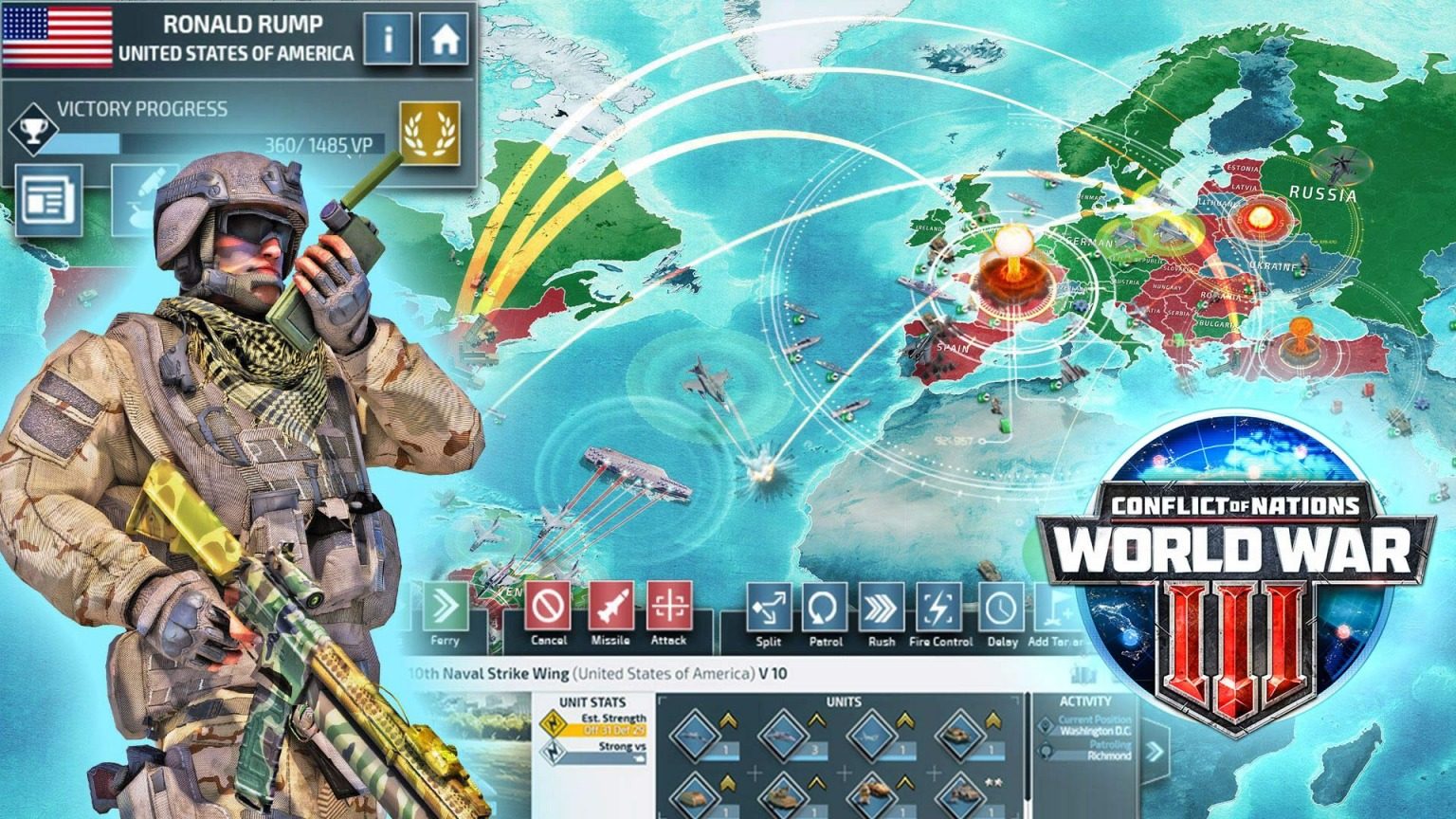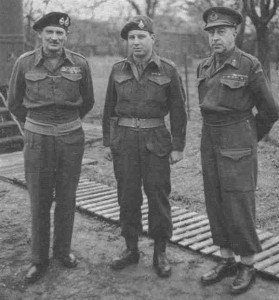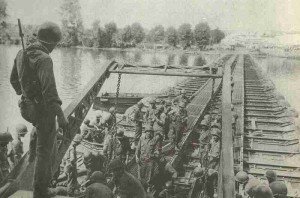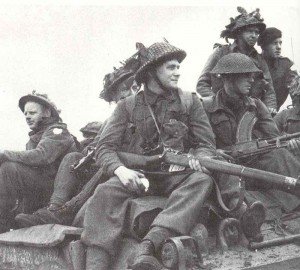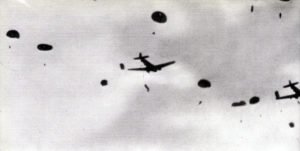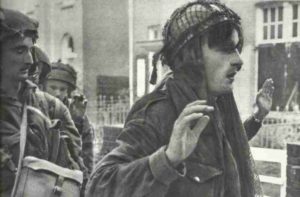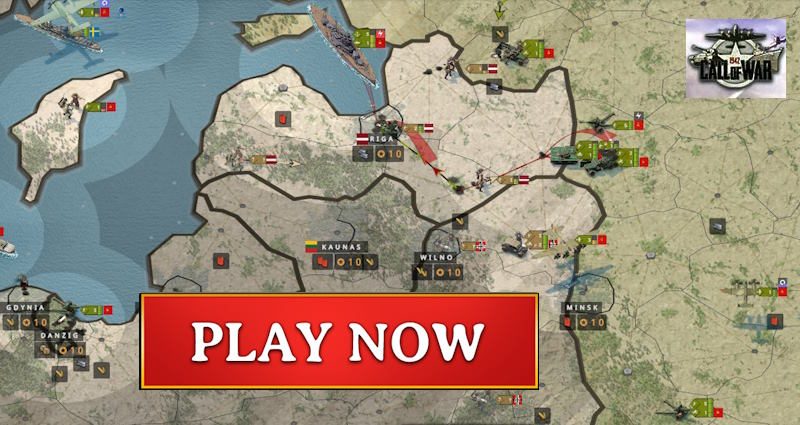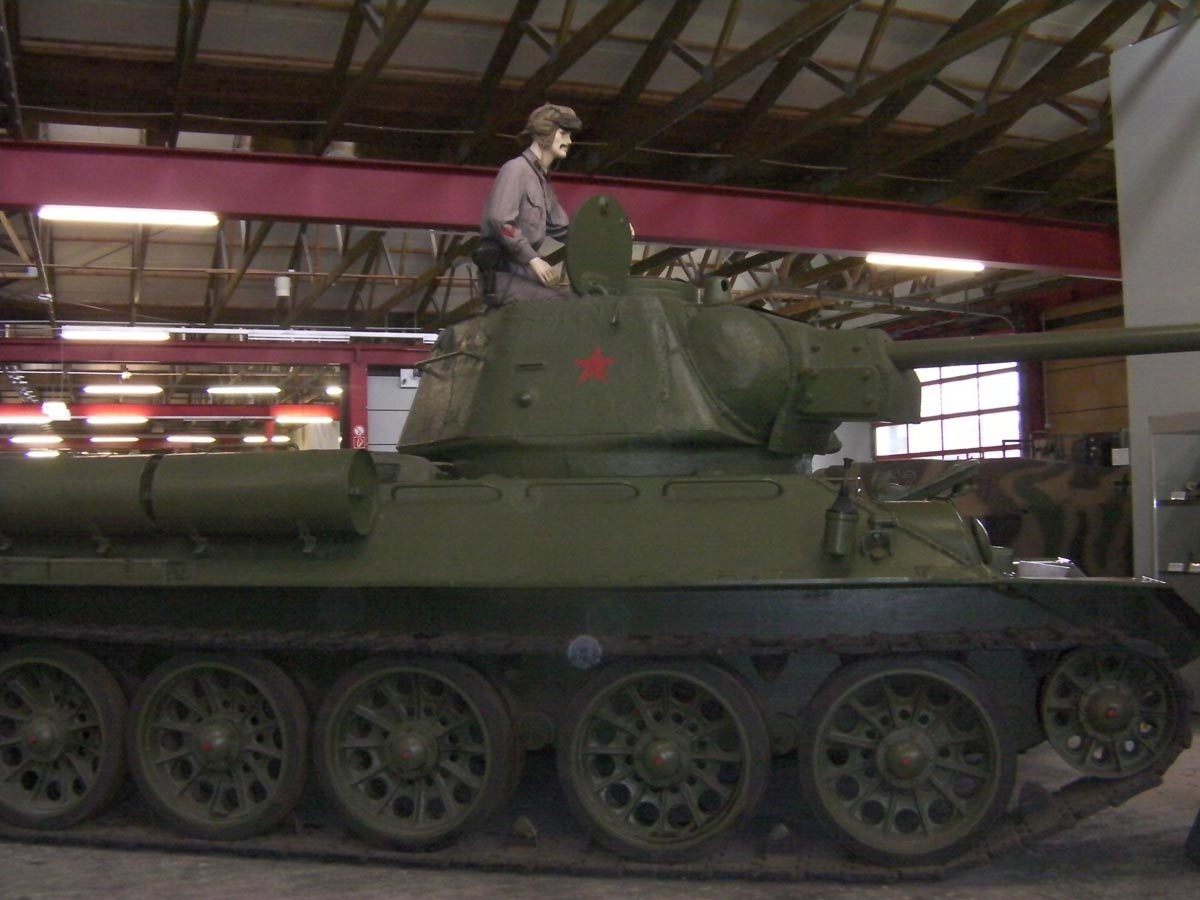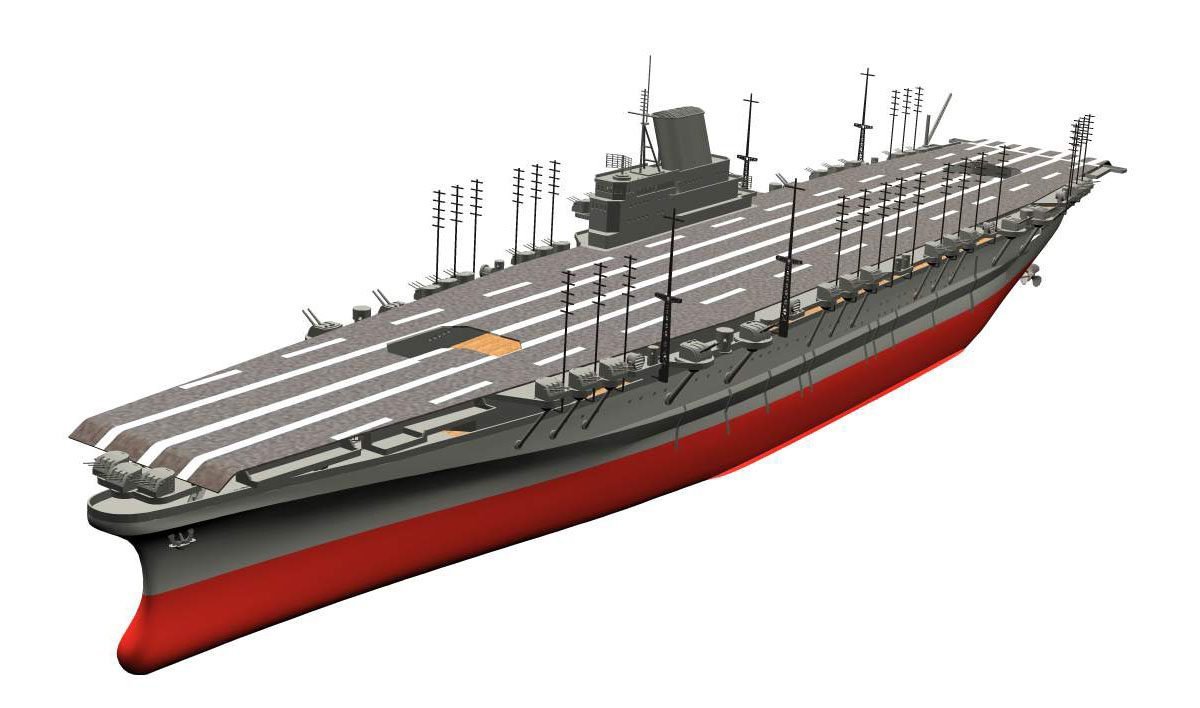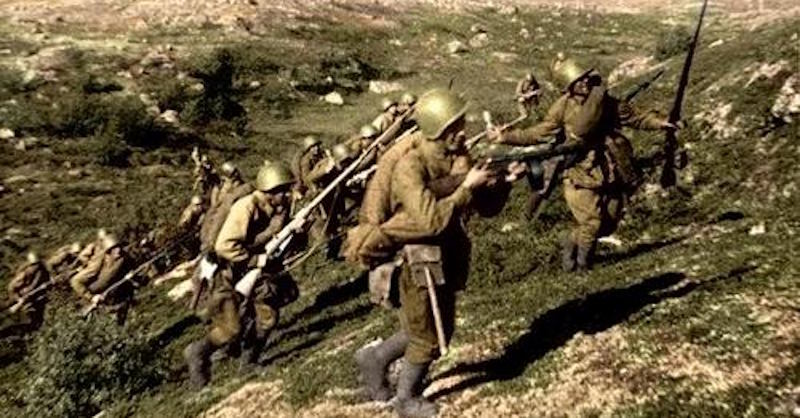German Orders of Battle on 16 September 1944 at the time of the allied airborne operation ‘Market-Garden’ around Arnhem.
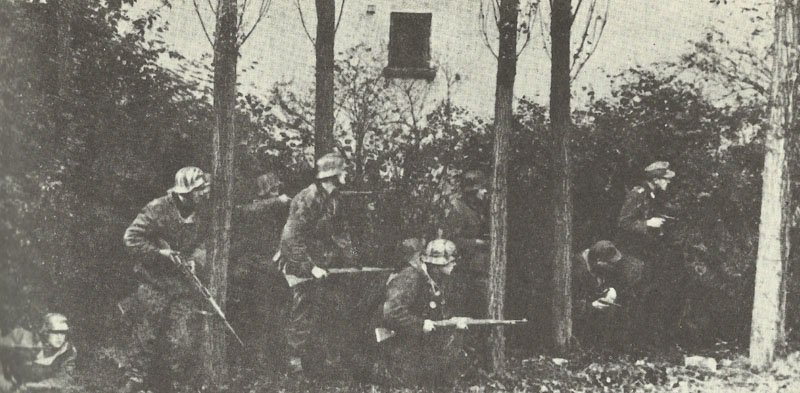
The deployment and distribution of the divisions of the Wehrmacht and subordinate units of allies one day before the Allied air invasion near Arnhem on 17 September 1944 and the stabilization of the Western Front after the break-out of the Allied armies from Normandy.
There are:
VG Division the newly introduced Volks (People’s) Grenadier Divisions.
Inf.Div. is infantry division.
Ground based infantry division is an infantry division which is normally used as fortress or coastal defense unit and therefore has none or only few means of transport.
Panzer Div. (or Pz.Div.) is the armored (tank) division.
Panzergrenadier (or Pz.Gren.) Div is the motorized infantry division with tank elements.
Jaegers are light infantry units, mainly for anti-partisan warfare.
Security divisions are units to guard rail links, supply roads, bridges and so on and were used mainly in anti-partisan warfare.
Battle groups are the remaining battle-worthy units of worn out divisions.
z.b.V. are units for ‘special deployment’.
Schematic layout of the German Wehrmacht from September 16, 1944
Eastern Front
Table of Contents
Army Group South Ukraine
Army | Corps | Divisions |
|---|---|---|
Reserves | III Panzer, LXXII z.b.V. | 23 Panzer Div. (battlegroup), 22. SS-Cavalry-Div. |
Corps Group XXIX | 4 SS-Polizei-Panzergrenadier-Div |
|
IV Hungarian | 4, 8 Hungarian Replacements Div, 20 Hungarian Inf.Div., 1 Hungarian Panzer Div |
|
VII Hungarian | 4, 12 Hungarian Reserve Div, Brigade Lakatos |
|
Army Group (6 Army) | 1 Hungarian Army with II Hungarian Corps | 1, 2 Hungarian Replacements Mountain Brigade, Special Formation v Kessel (elements German 20 Panzer-Div.), 25. Hungarian Inf.Div., 2 Hungarian Armored Div, 7 and 9 Hungarian Reserve divisions. |
Group 'Siebenbuergen' (Transylvania) | 8 SS-Cavalry-Div Florian Geyer |
|
LVII Panzer | Group General Winkler, Group General Breith (4 Mountain Div., remnants 76 Inf.Div., elements 20. Pz.Div.) |
|
8. Armee | IX Hungarian | 27 Hungarian light Div |
Group General Abraham | 46 Inf.Div., elements 20. Pz.Div., 2 Hungarian Replacements Div. |
|
XVII | 3 Mountain Div., 8 Jaeger-Div, Group Welker |
Army Group North Ukraine
Army | Corps | Divisions |
|---|---|---|
Reserves | elements 8 Panzer Div. (under refresh) |
|
Army Group Gen Heinrici (1 Panzer Army); reserves 154 Inf.Div. (arriving); 1 Hungarian Army is subordinated | Hungarian VI. (from subordinated 1 Hungarian Army; Reserves 2. Hungarian Mountain Brig) | 1 Hungarian Mountain Brigade, 10 Hungarian Inf.Div. |
Hungarian III (from subordinated 1 Hungarian Army) | 24, 16 Hungarian Inf.Div. |
|
German XXXXIX. Mountain (from subordinated 1 Hungarian Army) | 100, 101 Jaeger-Div., 13, 6 Hungarian Inf.Div. |
|
XI Corps | 168, 254, 96 Inf.Div. |
|
XXIV Panzer | 68, 75, 357 Inf. Div, Group Lt.-Gen. Püchler (1 Panzer, bulk 8 Panzer-Div., 208 Inf.Div.) |
|
17 Army (Reserves: 14. Panzer-Div. arriving) | XI SS | 545, 78, 544 VG-Div. |
LIX | 359, 371 Inf.Div. |
|
4 Panzer Army | XXXXVIII Panzer | 304 Inf.Div., 20 Pz.Gren.Div., 16 Panzer-Div., 97 Jaeger-Div. |
XXXXII | 1. Skis-Jaeger, 17 Panzer-Div., 88, 72, 291 Inf.Div. |
|
LVI Panzer | 342, 253, 214 Inf.Div. |
Army Group Center
Army | Corps | Divisions |
|---|---|---|
Reserves | XXXXVI Panzer | |
9 Army (Reserves: II Hungarian Reserve Corps, 25 Panzer-Div.) | VIII | 17 Inf.Div., 45, 6 VG-Div., Paratroopers Armored Div. HG, Battle detachment E, Grenadiers-Brigade 1132 |
Group Major-General Sikenius | 5 Hungarian Reserve Div. |
|
IV SS Panzer | ||
2 Army (Reserves: Panzer-Brigade 102, 1 Panzer-Div. arriving) | XX | 35, 542, 7 Inf.Div., 5 Panzer-Div., Grenadiers-Brigade 1131, Panzer-Brigade 104 |
XXIII | 211, 292 Inf.Div., 6 Panzer-Div., 541 VG-Div. |
|
Cavalry Corps | 3, 4 Cavalry Brigade, 14, 129, 102 Inf.Div. |
|
4 Army (Reserves: Panzer-Brigade 103) | LV | 28 Jaeger-Div., 367 Inf.Div., 203 Security Div., 562 VG-Div. |
VI | 286 Security Div., 50 Inf.Div., Group Danz |
|
XXXXI Panzer | 299, 170 Inf.Div., 558 VG-Div. |
|
XXVII | 131 Inf.Div., 547, 561 VG-Div. |
|
XXVI | 549 VG-Div., Group Colonel Schirmer (Paratroopers Reg 16), Escort Regiment HG, Cavalry detachment D, 1 Inf.Div., elements 390 Security Div., Pz.Gren.-Brigade von Werthern |
|
3 Panzer Army (Reserves: 390, 391 Security Div., 212 Inf.Div., Group General von Rothkirch) | IX | 69, 252 Inf.Div., Cavalry detachment H |
XII SS | 548 VG-Div., Panzer-Brigade Staff18, elements 7 Panzer-Div. |
|
XXXX Pz. | 551 VG-Div., Group Lt.-Gen. Decker (201 Security Div., bulk 5 Panzer-Div.) |
|
XXXIX Pz. | 4, 12 Panzer-Div., elements 5 Panzer-Div., bulk 7. Panzer-Div., Panzer-Gren.Div. GD, Group Staff Hirthes |
Army Group North
Army | Corps | Divisions |
|---|---|---|
Reserves | Feld-Ausbildungs-Division Nord (Field Training division 'North') |
|
16 Army | Group General von Keffel | 81, 93 Inf.Div. |
I (Reserves: 205 Inf.Div. arriving) | 281 Security Div, 263, 290, 215 Inf.Div., Panzer formation Oberst v Lauchert (Panzer Brigade 101) |
|
XXXXIII | 58, 225, 389 Inf.Div. |
|
18. Army (Reserves: 23 Inf.Div.) | X | 24, 132, 121, 329 Inf.Div., 14 Panzer Div. |
L | 126, 122, 32 Inf.Div. |
|
VI SS-Volunteers | 19 Waffen-SS-Grenadier-Div., 218 Inf.Div. |
|
XXXVIII | 83, 227 Inf.Div., 21 Luftwaffe-Field-Div. |
|
XXVIII | 31 VG-Div., 21, 30, 61 Inf.Div., 12 Luftwaffe-Field-Div. |
|
Army Detachment Narva (LIV Corps) | II | 563 VG-Div., 87 InfDiv., Battlegroup 207 Security-Div. |
III SS Panzer | Div. z.b.V. 300, 20. Waffen-SS-Grenadier-Div. (Estonian No 1), elements of 285 security div, 11 SS-Pz.Gren. Nordland, 4 SS-Brigade Nederland, 5 SS-Brigade Wallonien, 6 SS-Brigade Langemarck |
|
Coastal defense East (staff 2 AA-Div.), Coastal defense West |
Western Front
OB West (Supreme Commander West): Army Group D
Army Group B
Army | Corps | Division |
|---|---|---|
whereabouts unknown | II Paratroopers, LXXXIV | 348 ground based Inf.Div. |
Reserves | 319 ground based Inf.Div., in transit: Panzer-Brigade 107 and 108, 183 VG-Div. |
|
Reserves | II SS-Panzer | 9 SS-Panzer-Div. Hohenstaufen, 10 SS-Panzer-Div. Frundsberg (in refreshment) |
15 Army | Reserves | battlegroup 226 ground based Inf.Div., elements 59 and 245 ground based Inf.Div., 70 ground based Inf.Div. |
LXXXIX | bulk 24 ground based Inf.Div., 64 ground based Inf.Div. |
|
LXXXVI | bulk 59 ground based Inf.Div., 712 ground based Inf.Div. |
|
LXVII | 711 ground based Inf.Div., battlegroup 346 ground based Inf.Div., remnants 17 Luftwaffe-Field-Div., remnants 331 Inf.Div., remnants 344 ground based Inf.Div. |
|
1 Paratroopers | LXXXVIII | 719 ground based Inf.Div., 85, 176 Inf.Div., remnants 84, 353 and 89 Inf.Div., 6 Paratroopers-Div. |
7 Army (Reserves: 12 Inf.Div. in transit) | LXXXI | 275 Inf.Div., remnants 49. ground based Inf.Div., battlegroups 116 and 9 Panzer-Div., Panzer-Brigade 105 |
LXXIV | battlegroup 347 ground based Inf.Div., 3 Paratroopers-Div., 526 Inf.Div. |
|
I SS-Panzer | ||
XXV | 265 ground based Inf.Div., remnants of 266, 343 ground based Inf.Div. and 2 Paratroopers div. |
Army Group G
Army | Corps | Divisions |
|---|---|---|
Reserves | LVIII Panzer | 30 SS-Waffen-Gren.Div. (Russian No.2) |
1 Army | LXXX | 5 Paratrooper-Div., 48 ground based Inf.Div., battlegroup Panzer-Lehr-Div. |
LXXXII | 19, 36, 559 VG-Div. |
|
XIII SS | 462 Inf.Div., 17 SS-Pz.Gren. Götz von Berlichingen, 3 Pz.Gren.Div., elements 15 Pz.Gren.Div., 553 VG-Div., Panzer-Brigade 106 |
|
5 Panzer-Army | XXXXVII Panzer | bulk 21 Panzer-Div., Panzer-Brigades 111, 112, 113 |
19 Army | LXVI | bulk 15. Pz.Gren.Div., elements 21. Pz.Div., 16. Inf.Div. |
LXIV | 716 ground based Inf.Div., remnants 189 Reserve-Inf.Div. |
|
IV Luftwaffe-Field | 338 ground based Inf.Div., 198 Inf.Div., 159 Reserve-Inf.Div. |
|
LXXXV z.b.V. | 11 Panzer-Div. |
Italy
Army Group C
Army | Corps | Divisions |
|---|---|---|
Army Liguria (LXXXVIII Corps) | Reserves | bulk 34 Inf.Div., 3 Regiment Brandburg, Italian SS-Brigade (under creation) |
LXXV | 157, 148 Reserve-Inf.Div., 5 Mountain Div., elements 34. Inf.Div, |
|
Battlegroup Sieb | 3 Italian Div. |
|
Corps Lombardia | 232 ground based Inf.Div., 4. Italian Mountain Div. |
|
Commander Adriatic Coastal Region | 188 Reserve-Mountain-Div., 90. Pz.Gren.Div. (in transit), 237 ground based Inf.Div., 94 Inf.Div. (in refreshment) |
|
14 Army | XIV Panzer | 16 SS-Pz.Gren. Reichsführer SS, 42 Jaeger-Div., 65 Inf.Div. |
I Paratrooper | 362, 334 Inf.Div., 4 Paratrooper Div. |
|
10 Army | LI Mountain | 715, 305, 44 Inf.Div., 114 Jaeger-Div. |
LXXVI Panzer | 278, 71, 98, 356 Inf.Div., 26 Panzer-Div., 29 Pz.Gren.Div., 1 Paratrooper Div., 20 Luftwaffe-Field-Div. |
|
Operation zone Venetian Coastal Country (Corps Witthöft) | 162 (Turkmen) Inf.Div. |
Southeast
Army Group F
Army | Corps | Divisions |
|---|---|---|
Representative General Wehrmacht in Hungary | Reserves | all in creation: 18 SS-Pz.Gren.Div. Horst Wessel, elements 22 SS-Kavallerie-Div., Waffen-Gebirgs-Div.SS Kama (Kroatian No.2), Waffen-Gebirgs-Brigade SS (Tartas No.1), Panzer-Brigades 109 and 110, 247 and 326 VG-Div. |
1 Panzer Army | LXIX z.b.V. | 1 Cossacks-Div., Jaeger-Reserve-Regiment 1 |
XV Mountain | 264 ground based Inf.Div., 363 and 392 Kroatian Inf.Div. |
|
V SS Mountain | 118 Jaeger, 7.SS-Mountain-Div. Prinz Eugen, 369 Croat Inf.Div., 13 SS-Mountain-Div. Handschar (Croat No.1) |
|
Army Group E (subordinated to Army Group F) | Wehrmacht Commander Macedonia | all in transit: 11 Luftwaffe-Field-Div., SS-Mountain-Police-Regiment 18 |
XXI Mountain | 297, 181 Inf.Div., 21 Waffen-SS-Geb.Div. Skanderberg (Albanian No.1; in creation) |
|
LXXXXI z.b.V. | Fortress-Brigade 968 |
|
XXII Mountain | 104 Jaeger, Fortess-Brigades 966 (Cefalonia) and 1017 (Corfu) |
|
LXVIII | 117 Jaeger-Div., Fortress-Div. 41 |
|
Commander of fortress Crete | 22 Air-Landing-Div (in evacuation), Fortress-Div 133 |
|
Commander East Aegean | Assault-Div. Rhodes (in evacuation), Fortress-Brigades 939 (Rhodes), 967 (Cos) and 938 (Leros) |
|
Military Commander Southeast | Command staff Schneckenburger | 1 Mountain-Div., battlegroup Fischer (from battlegroup Weyel and 2 Regiment Brandenburg), motorized Grenadier-Brigade 92, SS-Police-Regiment 5 |
In deployment or re-deployment with the reserve army:
Corps LXV. z.B.v.
26, 47, 271, 272, 352, 246, 363, 337, 349, 256, 361, 371, 340, 708, 575, 577 Inf.Div.
35, 581, 582, 576, 62, 276, 583, 584, 585, 586, 587, 588 Peoples Grenadier Divisions (VG)
14th Galician SS Volunteer Division, Fuehrer Grenadier Brigade
18th and 25th Panzer Grenadier Division, Panzer Grenadier Division Feldherrnhalle
1st and 2nd Italian Infantry Division
18th Luftwaffe (Air Force) Field Division
TOTAL
218 divisions plus 11 1/3 equivalent from smaller units.
In addition, 8 security divisions, 1 field training division, 9 1/3 reserve divisions, 30 replacements, 7 air force divisions, 30 1/2 allied or volunteer divisions under German command, 37 1/2 divisions in formation or reestablishment.
See also: Germany Army Unit Organization 1942-45.
Allied advance to the Rhine
The political reason was simply that the number of American troops was constantly increasing, while that of British troops was shrinking. Thus, a third American army, the 9th US Army under General William Simpson, was under construction.
At the same time as the American troops increased considerably, Montgomery had to disband the 59th division on August 14th in order to keep other British divisions ready for action.
Therefore, the increasing dominance of the American soldiers with the allied armies in the west made an American commander-in-chief inevitable.
In addition, the Briton Montgomery already had great problems working with American officers in Sicily and Italy. He refused to attend the regular meetings between Eisenhower and Bradley in the weeks before the transfer of command, forcing the Americans to visit Montgomery.
Field Marshal Alexander may have been an acceptable partner for the Americans, but Montgomery was out of the question. Montgomery, the victor of Alamein over Rommel, was far too popular in Britain to be able to replace him.
This question was not easy, since the Germans had destroyed the port of Cherbourg before the fall of the city and were to keep the other port cities in France for a long time, some even until the end of the war. Brest could be captured until September 18th, but the port facilities had been destroyed so much that not a single supply ship could be unloaded there until the end of the war.
The more the Allies advanced, the longer their supply routes became from the artificial ports on Normandy beaches. In order to get enough supplies, the port of Cherbourg had to be repaired and Antwerp had to be captured. Until then, not all Allied armies could be sufficiently supplied.
Montgomery was now of the opinion that if the American 12th Army Group were subordinated to his British 21st Army Group and these two Army Groups received the bulk of the available supplies, that he could advance in the north, cross the Rhine, advance to northern Germany and still reach Berlin at the end of 1944. Like many responsible British leaders in London, Montgomery regarded the war as a practical victory and wanted to be the one to end it.
From an objective point of view, however, the plan was impracticable. Apart from the fact that the Rhine was a mighty river and difficult to cross, Patton’s advance further south would have had to be stopped, although he was now closer to the Rhine. In addition, the Allied open flank of the advance in the north could easily have been threatened by a re-strengthened Wehrmacht from the south.
The only advantage of the plan was that the launch position for the flying bomb V-1 and the even more dangerous V-2 could have been conquered.
However, after the Americans’ experience of how difficult it was for Montgomery to work with generals from other nations, Eisenhower rejected the plan. The advance on the Rhine was to take place on a broad front. But since the port of Antwerp was urgently needed and the ballistic missile V-2 was just starting to fire, Montgomery’s troops had to be given additional support.
At the same time Patton advanced rapidly south of the Ardennes, but he ran out of fuel. Although he was able to conquer some German fuel depots, it was not enough and the German resistance increased along the border. Thus, the strategy personally ordered by Hitler to defend the French port cities with strong garrisons paid off.
Encouraged by his additional supplies and the Allied Airborne Army under his command, Montgomery now made three gross mistakes, which would bring the Allied advance to a standstill for several months.
This gave Montgomery two good possibilities. One was to cut off the German 15th Army from its retreat routes and the other was to clean the Scheldt estuary so that ships could reach the port of Antwerp.
But Montgomery, who a few days before had tried in vain to convince Eisenhower to end the war in 1944 with 40 divisions and an advance into northern Germany, now stopped his troops and gambled away both possibilities.
The mass of the German 15th Army was able to retreat and the Scheldte estuary had to be cleared in bloody battles by Canadian troops until 27 November 1944, which delayed the use of the port of Antwerp for months.
Thus any attack on Germany was excluded before the port of Antwerp could be used. Montgomery, at the moment of a rather rare self-criticism, realized that he had made a mistake.
In order to erase this, Montgomery, with Eisenhower’s agreement, decided to capture a series of important bridges with his two American and British airborne divisions.
The Americans were to conquer the two southern bridges, while the 1st British Airborne Division was to secure the third bridge together with the Polish Paratrooper Brigade.
At the same time the British 3rd Corps was to attack and reach the bridges with the paratroopers and thus enable the crossing of the lower reaches of the Rhine.
A similar operation further south at Wesel would have required fewer river crossings, but Montgomery probably opted for Arnhem as these bridges were all located in British operational area.
Although Montgomery was warned by intelligence officers that German tank troops were in the area, he implemented the plan with Eisenhower’s permission.
The third big mistake was that the jump zone of the British 1st Airborne Division was miles away from the Arnhem bridge. This should keep the losses at the landings low, but in the consequence exactly the opposite occurred.
The 82nd US Airborne Division took the bridge of Nijmegen after heavy fighting, together with arriving British troops of the 3rd Corps.
The British tanks and American paratroopers then advanced on 23 September in a narrow hose from Nijmegen towards the Polish paratrooper brigade on the southern bank of the Rhine River.
But the 1st British Airborne Division was too far away from the bridge on the other side of Arnhem. It could not hold the northern access road across the river.
The German resistance had been hastily organized, but the two SS-Panzer-Divisions 9th SS-Panzer-Division Hohenstaufen and 10th SS-Panzer-Division Frundsberg were in the area for refreshment and pushed the British paratroopers away from the bridge.
The last step, to cross the Rhine in 1944, failed narrowly but irretrievably, against an increasingly resurgent German resistance.
The restoration of German punch in the West became evident through the failure of Operation ‘Market-Garden’, which was also evident in the subsequent hard fights of the Canadians for the Scheldt Estuary and among the Americans in the South.
Defense specialist Model took command over from von Rundstedt and most of the German reinforcements and material were sent to the West. At the same time, the Allied supply lines became longer and longer, while those of the German troops became shorter.
Patton in the south also found that the old German defence lines of the Siegfried Line had been restored and occupied.
In mid-September 1944 the Allied advance came to a standstill and the front turned into a trench war, caused by exhaustion of the Allied troops, shortage of supplies and the regained German military power.
References and literature
A World at Arms – A Global History of World War II (Gerhard L. Weinberg)
Der Grosse Atlas zum II. Weltkrieg (Peter Young)
Kriegstagebuch des Oberkommandos der Wehrmacht, Band 1-8 (Percy E. Schramm)


